Personal Care, Shaving
Guide To Plastic-Free Shaving
Shaving is a necessity and that’s plain and simple.
Humans have been shaving since at least 3,000BC where primitive copper razors were used to cut off excess hair around the face and head, enabling us to see and hear better whilst styling our facial hair!
Alexander the Great was a great advocate of shaving during his reign in the 4th century BC and shaving has become slowly adopted by virtually every culture in the world. Shaving has become an increasingly important element of our lives.
Today, shaving is a part of our lifestyle for both men and women. As shaving has become more widespread and as we shave more regularly, we’ve also started to consume alarming quantities of shaving products.
The Environmental Protection Agency in the US estimates some 2 million razor cartridges and disposable razors are thrown out each year in the US alone. In the UK, around 5.5 million people each year are using disposable razors and cartridges.
In fact, it is estimated that 70% of all health, beauty and personal care products end up in landfill including some 150 billion pieces of packaging and other plastic accessories.
The commercial shaving industry makes a huge contribution to these figures. Not only are disposable razors incredibly bad for the environment, but the badger hair shaving brushes also involve serious cruelty to badgers.
Here is Clear Confidence’s guide to ethical, plastic-free shaving.
Table of Contents
Plastic in the Shaving Industry
It is universally recognised now that we need to make a combined, collective effort to look after the planet. There is no sentimentalism to that statement, it is not a stereotype or cliche. For each square mile of ocean or sea, UNESCO estimates that there are some 42,000 pieces of plastic that contribute to the death of millions of marine animals and seabirds each year.
In fact, there is so much plastic in the ocean that it forms its own sort of island, called a gyre, the most prolific being the Great Pacific Garbage Patch that has a total area of some 1.6 million square kilometres. That’s almost the size of Texas.
Not only does waste plastic and landfill end up in the land and ocean, it even ends up in our water supply, with a recent WHO report suggesting that the concentration of microplastics in our drinking water supply is reaching an all-time high. Their effects are currently unknown but many speculate whether or not this is a public health time bomb.
There is no end to stats and stories surrounding the impact waste plastic, in particular, is having on the environment.
The Inconvenient Truths of the Health and Beauty Industries
It is ironic that some of the industries that help us look after ourselves have some of the worst records for looking after the planet.
The problem with the health, beauty and cosmetics industries is that they involve constant supply and demand.
Products, like shaving tools, that were once made to last are now made to be used once and thrown away.
This achieves two objectives for the health and beauty industries:
- Keeps us needing to purchase more products
- Allows them to market more products to us
By marketing disposable products, the industry can market more products in general. Instead of manufacturing just a handful of high-quality items, brands can then market lots, and they need to be replaced. That means buying more products.
In the shaving industry, these products are disposable razors and cartridges. But generally speaking, they could be anything ranging from make-up to sanitary products and facial care products, toothbrushes, soap and cleansers, etc, etc.
A Short Case Study: The Lightbulb Industry
It may seem an odd tangent to pursue, but the lightbulb industry serves as a near-perfect analogy for what has happened in the health and beauty industries.
The process of shortening the lifespan of products and making them more ‘disposable’ is called ‘planned obsolescence’. It is a well-known commercial technique that has been around for centuries. The aims of planned obsolescence are to make products obsolete or useless after a certain time period or a number of uses, meaning that consumers have to buy more.
This combines with the enormous range of products on offer these days. It essentially creates a situation where we tend to bounce between different products buying more of everything, often without even getting rid of our old stuff.
A prolific example of planned obsolescence in action was the “Phoebus Cartel” of the 1920s. Light bulb manufacturers including Germany’s Osram, Associated Electrical Industries in the UK, and General Electric (GE) colluded and agreed to artificially lower the life expectancy of bulbs to some 1,000 hours. The scandal dubbed as The Great Lightbulb Conspiracy by journalists of the time is widely viewed to have given birth to the concept of planned obsolescence.
Today, planned obsolescence is banned by various laws but the general consensus is that the concept is alive and well. There have been numerous high-profile accusations of planned obsolescence over the years, but perhaps the most well-known are accusations aimed at Apple for slowing down or breaking old iPhones to encourage people to buy the new ones.
There is certainly some truth to these claims as Apple even admitted themselves.
Planned Obsolescence in the Shaving Industry
The shaving industry, like virtually all industries, was founded on pride in products of genuine longevity and quality. Put simply, at the start of the industrial revolution in the 1700s, most people just did not have the wealth and affluence to constantly go about replacing things. Demand was for quality products that lasted the ages, products that manufacturers could boast about being the most durable in their class.
The focus on genuine, long-lived products strengthened throughout WWII when manufacturers had to go toe-to-toe to produce the best equipment for the war effort, even despite the intense pressure on manufacturing at the time.
In fact, it was around this time that modern razors began to take off. Gillette, the same Gillette as today, was founded by an American businessman named King Camp Gillette in 1895. He went on to create the world’s first safety razor.
The key design of the safety razor is in the name – safety. Cutthroat razors and straight blades had been the tool of choice for shaving since the 18th century or before but they had always been notoriously hard to use and expensive to buy. Proper shaving remained an activity reserved for the middle and upper classes until King Gillette sought to mass-market the safety razor.
In WWI, Gillette’s first safety razors were provided to US servicemen in WW1. 3.5 million razors and some 32 million blades were sold. This continued in WWII and Gillette’s market share in the world shaving industry was comprehensive.
Part 1: What Are Safety Razors?
You may be wondering what safety razors even are. Safety razors are composed of two pieces.
Firstly, you have the razor handle. This looks like a modern razor. It’s a handle that houses the razor blade. They’re designed to hold razor blades at an angle or position optimal for shaving, e.g. an angle where they can cut hair without grazing or cutting the skin, hence the name safety razor.
Secondly, you have the razor blade itself. Razor Blades used in safety razors are standard multi-use razor blades. They are simple, super-sharp, single blades.
You load the razor handle with the razor blade and you’re good to go. To maintain a safety razor, you only need to replace the blade, not the whole thing. Standard razor blades are very cheap and since they’re made from very thin sheets of steel, they’re easy to make and can be recycled (if you follow specific guidelines as they’re obviously very sharp).
Gillette: The Road to Planned Obsolescence
The obvious benefit of safety razors for consumers is that once you own the handle, you only need to buy razor blades from then on, which are cheap.
The obvious downside for Gillette was that, once consumers own the handle, they only need to buy razor blades from then on…which are cheap.
What consumers gain in value from a longlasting product, Gillette loses in sales – they need people to want more! It is far more profitable to sell products that are not cheap to maintain.
This is where planned obsolescence comes into play.
From Reusable Razors to Disposable Razors
Gillette’s task was to slowly move its customers from safety razors to disposable alternatives. There were other players in the shaving industry by this time too, including Wilkinson Sword of England and Schick, also American.
- In 1970, Wilkinson Sword released the ‘bonded blade’. This was the first razor-and-cartridge ‘shaving system’. It was quickly followed by similar models from Gillette and Schick. The Gillette Mach3, made in 1998, is probably one of the most well-known cartridge razors that have ever been created.
- In 1974, Bic also marketed the first truly disposable razors which meant you didn’t even need to replace the blade. Just use them a few times and throw them away.
It was then that shaving companies unlocked the key to long-term profits.
By successfully phasing out older, more sustainable safety razors, they created a new market in less sustainable disposable and cartridge razors.
Gillette themselves have been analysed for their own techniques of planned obsolescence.
For example, their shaving cartridges were marketed with a moisture ‘strip’ that was suggested to improve shaving. Marketing campaigns implied that when the strip wore down and disappeared, it was time to replace the cartridge.
This gave them leverage over the rate at which consumers have to buy their product – could it possibly encourage users to throw the cartridge away before it is necessary to do so, simply because the strip was worn?
Back to Basics: Rediscovering the Safety Razor
Alongside the enormous waste of money and environmental impact of planned obsolescence in the shaving industry, safety razors were somewhat lost to the sands of time in the process…until recently.
Safety razors are the vinyl records of the health and beauty industries. They’ve risen from the ashes, regaining their popularity and not just for nostalgic reasons, but because people genuinely love them.
The joy and benefits of safety razors are threefold:
- They enhance the whole ritual of shaving, making it more rewarding
- They provide a superior shave to commercial razors
- They’re more environmentally friendly, cheaper and more sustainable
These are all compelling claims, but are they true?
Here is why they are:
Safety Razors Are Not Made From Plastic
There is no need or reason to make safety razors from plastic. They are designed to last, not to break. That means using high-quality materials like metal and wood.
Clear Confidence’s safety razor features a bamboo and metal handle. Bamboo, when farmed responsibly, is remarkably sustainable owing its low-nutrient requirements and fast-growing nature. It’s also very durable, great to handle and looks great.
The razorblades used in safety razors are standard thin steel razors.
These are usually fully recyclable at your local scrap metal recycling centre. It can vary between councils, so do check if you are unsure.
For example, Greater Manchester council clearly state here that “steel safety razor blades can be recycled in the scrap metal container at a Recycling Centre,” and that “cartridge and disposable razors go in your general waste bin.”
Rutland Council here, however, say that razors cannot be recycled in the standard recycling bin.
Sometimes, you’ll need to follow the guidelines for knives if razor blades are not listed.
When you do recycle razor blades or dispose of them otherwise, always wrap them up safely in thick paper or use a blade bank. We have a blog post on this here.
Safety Razors Provide a Better Shave
Safety razors provide a superior shave. All those 3 blades, 4 blades, 5 or 6, 7 blade commercial razors do is increase contact between the razor and the skin. It’s pure marketing gimmicks.
Think about it this way, do you really need 3, 4, 5, 6 or 7 blades to cut a tiny hair that is some 50 micrometres thick?!
Clearly, the answer is no!
The single sharp blade used in a safety razor is more than sufficient for cutting hair. Not only that, but minimal contact between blades and the skin reduces razor burn, inflammation and in-grown hairs. Safety razors provide a finer, closer shave that is better for the skin.
Safety Razors are a Delight to Use
Safety razors are not hard to use. People imagine all sorts of issues arising when they use safety razors, like cutting themselves or failing to achieve a decent shave, etc. In reality, they’re easy to use and definitely safe. It will take some practice to find your groove and rhythm, but in the end, it’s more than worth it.
Not just that, but the ritual of using a safety razor for a proper wet shave is just different. It involves classic techniques, shaving brushes and high-quality shaving cream. It’s a ritual that can improve confidence, a process that can be savoured and enjoyed.
Part 2: Shaving Brushes
We’ve learnt a lot about the shaving industry and how planned obsolescence techniques phased out superior, sustainable safety razors in favour of more profitable disposable alternatives.
But razors are not the only component required to shave, you need shaving brushes to, so where do they fit into all of this?
Why Do We Need Shaving Brushes?
Shaving brushes work with shaving soaps, foams and creams to create thick lathers on the skin.
They’ve been a traditional component of the typical shaving kit for centuries.
Shaving brushes are pretty essential for wet shaving. Razors require lubrication against the face to work properly, this lowers friction and helps ‘stick’ the blade to the skin whilst cushioning it from the skin itself. By adhering the razor to the face or skin, using shaving soap, gels or cream, razors used in conjunction with shaving brushes provide a superior shave that is also much less likely to cause nips or cuts.
Think about it like this; if you push your hand over an unlubricated surface, it will catch and stick, and not move at a continuous, smooth pace. Add some soap and water and it’ll glide right over. The concept is simple and this is the same as what happens when you lubricate your face with soaps prior to shaving.
Shaving brushes are the best way to apply that soap. Again, this just makes sense. It’s the same principle as to why we use paintbrushes to apply paint. Brushes provide a nice, flexible and even coverage of a surface. We can control where we spread the soap, making sure we reach every corner of our faces.
Shaving Brushes: Creating a Lather
Creating a lather is also very important for the shaving process. A brush helps us ‘stir up’ the cream on our face, working the soap beneath the hairs and onto the skin itself. Lathering up the face with a shaving brush also means lifting the airs up from the face so can stand upright. This primes them for shaving and ensures the brush catches them effectively at the base.
Without using a brush and shaving product like soap or cream, you’ll be pulling a razor blade over unlubricated skin with flattened hairs that are very hard to cut. It’s just not going to go well…!
The Shaving Brush Industry
The shaving brush industry is not really known for its unsustainable use of plastic, but it has its own dark features relating to the bristles on the brushes themselves.
Since shaving brushes were adopted in the 1700s, animal hair was the primary source of hair for brushes and similar items. Badger hair was already established as a thick, dense and weighty type of hair with soft qualities. Badger hair had been used for paintbrush manufacturing long before it came to be used in shaving brushes.
Today, badger hair remains the primary type of hair used in shaving brushes. Horsehair and boar hair are also used but overall, badger hair is by far the most popular choice.
Types of Badger Hair
Badger hair is divided into different grades. Each type of badger hair is plucked from a different part of a badger ranging from its neck to its stomach.
- Pure Badger Hair: This is plucked across some 60% of the badger’s body. Essentially that means that the hair themselves are not all of equal consistency, despite all being badger hair. These are the cheaper badger hair brushes
- Best Badger Hair: Vaguely named ‘best badger hair’ tends to be plucked from some 25% of the badger’s body, usually around the neck or stomach. This means the bristles are more consistent with each other.
- Super Badger Hair: Super badger hair is hand-plucked from the same part of a badger to ensure that the hairs match. They are usually graded for consistency. These can cost something like £100.
- Silvertip Badger Hair: Hand-graded hairs plucked and matched exactly with soft, silver-tips are called silvertip badger hairs. Some of these brushes are considered collector’s items and might cost up to some £500.
Is There Really a Difference?
Whilst we don’t want to upset badger hair purists, there is very little evidence to suggest that paying extortionate sums of money for expensive badger hair brushes is anything other than a vanity project. There is no real value in very expensive badger hair. The vast, vast majority of it still comes from the same Chinese farms that provide badger hair for cheaper brushes.
Sometimes, the value is really in the handle of the brush that might be made from some special material or gilded with silver or similar, but when it comes to varying grades of badger hair, the difference in value is questionable.
The Problem With Badger Hair
Cruelty to badgers is a huge problem in the badger hair industry. PETA has launched numerous investigations into badger hair farms, which are primarily located in China, with some devastating findings.
Some details of the PETA report are shocking to read. Not only are badgers caught illegally using snares and other cruel traps which end up killing many, but those that are caught are kept in confined cages with limited light, food, water and other supplies. The process of removing the hair is also brutal and cruel.

Badgers are wild animals and are not domesticated for animal hair production in the same way that say, a sheep, can be periodically sheared for wool without harm. Badger hair is tough and has to be ripped out of the body, often from highly sensitive areas. It does not grow back quickly either, so badgers are often treated as disposable and are killed after their hair has been sufficiently harvested.
The report has not been taken lightly and has been validated by numerous businesses worldwide including Proctor and Gamble who vowed to stop using these particular Chinese suppliers. Whether or not progress has been made here or whether brands followed through with their reaction – or whether this just was a PR stunt for them – is thoroughly debatable.
As you can see, the problem with shaving brushes and disposable razors are different but they both share unethical practices that the consumer must act on, but not buying these products.
By reducing demand for badger hair, the supply will have no choice but to reduce. The fewer people who buy badger hair brushes, the fewer badgers are killed.
It’s worth noting that each badger brush requires a lot of hair, it’s highly likely that creating just one brush involves direct and serious harm to a badger.
So it really is a case of every brush counts.
What is the Alternative?
It’s the 21st century and the fact that we still harvest badger hair for shaving brushes is quite farcical. Clearly, there are more ethically assured alternatives which do the job at least as well as badger hair, right?
Synthetic hair shaving brushes are rising in popularity and with good reason.
Clear Confidence provides cruelty-free shaving brushes of two varieties.
Firstly, we have the synthetic hair shaving brush available with both wooden and plastic handles.
Secondly, we have a special entirely plastic AND badger hair-free shaving brush.
Yes, plastic is involved in the construction of many non-badger hair shaving brushes, but these are not disposable items. Synthetic shaving brushes are tough and strong, much more long-lasting than most badger hair brushes. Their longevity combined with the fact they do not involve cruelty to badgers still undoubtedly makes them an ethical choice compared to traditional badger hair brushes.
For an entirely plastic-free shaving experience, our plastic-free shaving brush actually uses grass-based bristles. There is no plastic or badger hair involved in the construction of this brush.
Ethical Shaving With Clear Confidence
We live in an era of unprecedented material wastage and our consumerism is threatening the planet and its inhabitants.
As users of health and beauty items, we do have a collective responsibility to make a difference. We are just a few decisions away from turning around our own individual contributions to this planet-wide issue.
One thing we can do is convert to ethical alternatives where possible. There are more choices than ever before – consumers have more power to choose ethical products with lower environmental impacts.
Plastic-free shaving is one key area where we, as individuals, can turn our back on plastic disposables and products that involve environmental damage and cruelty to animals.
Clear Confidence’s focus is on providing 100% ethical cruelty-free and vegan products. We also work hard to offset our carbon footprint.
You can read our Statement of Ethics here.
Our Products for Plastic-Free Shaving
Plastic-Free Razor – Double Edge Safety Razor with Bamboo Handle
This is our Clear Confidence safety razor. Safety razors are the antidote to disposable plastic razors. Ours is 100% plastic-free. The entire safety razor is crafted from sustainable materials and there is absolutely no plastic used throughout, nor in the packaging.
It uses standard razor blades that are cheap, easy to obtain and recyclable.
Once you purchase it (and it isn’t even expensive), you’ll be able to use normal cheap razor blades to keep it going.
Over a lifetime, you’re sure to save hundreds whilst enjoying the benefits of a safety razor, of which there are many!
Our safety razor is constructed from high-quality stainless steel and bamboo. Bamboo, when farmed sustainably, is environmentally friendly due to its rapid growth rate and low nutrient consumption. That means that it requires little energy input to grow and the yield is high, meaning small areas of land can be used to grow a huge amount of bamboo. As per our Statement of Ethics, we are dedicated to the environmental impact of our business and work closely alongside the manufacturers for all of our products.
Plastic-Free Shaving Brush with Ash Wooden Handle – Vegan Friendly
One of our newest products, this innovative shaving brush is 100% plastic-free and vegan friendly. In fact, all of our shaving brushes and other products are 100% cruelty-free.
Our other synthetic hair shaving brushes still provide a superb ethical alternative to cruel badger hair shaving brushes.
Badger hair alternatives are not just ethical and help reduce demand for badger hair, but they also represent excellent quality and superb value in their own right. Synthetic and other alternative bristles are just as good as badger hair. They hold water very well, allowing you to work up a sublime lather across your face. They’re also durable and last longer than badger hair. Not just that, but they can be a hypoallergenic choice too for those that react badly to badger hair, and unlike natural fibres, synthetic fibres do not easily get mouldy or rot.
Summary
The health and beauty industries, including the shaving industry, are major contributors to global landfill and oceanic pollution. The shaving brush industry has its own unique set of challenges and problems resulting from the poor treatment of badgers.
One of the best approaches to tackling these problems is to reduce demand for commercial brands and products.
By replacing your health, beauty and shaving products with ethical alternatives, we can work together to reduce the impact and cruelty of these industries.
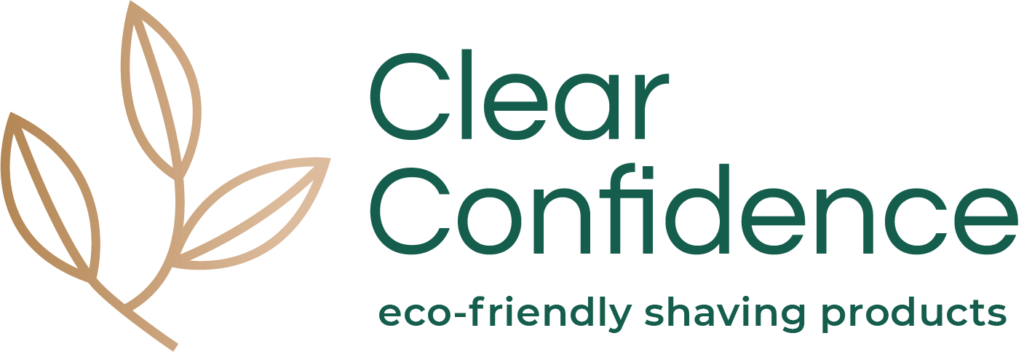

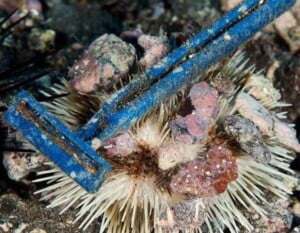
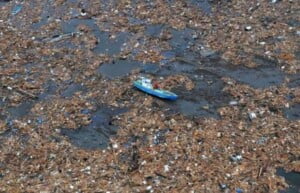


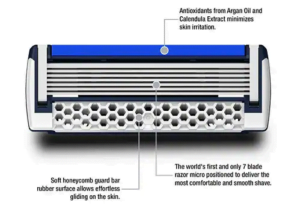
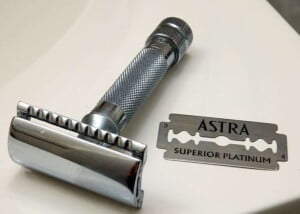
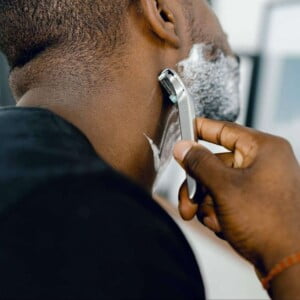

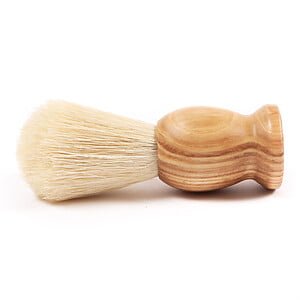
8 simple steps to the best shave
8 simple steps to the best shave possible